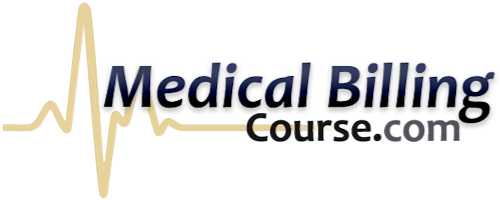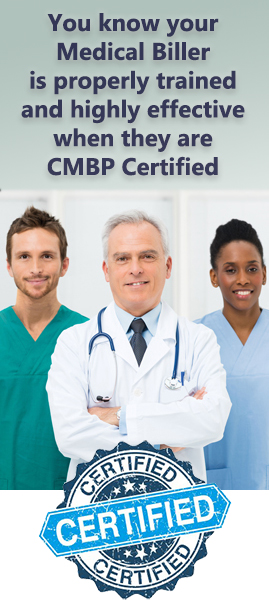- 09/08/2025
- Posted by: Medical Billing Course
- Categories: Medical Billing Certification, Medical Billing Course, Medical Billing Employment

Medical Billing Course Essentials: Certification to Career Growth
Are you ready to dive into a thriving career in healthcare administration by mastering the essentials of medical billing and revenue cycle management? Navigating the intricate world of coding systems, insurer protocols, and compliance can be daunting. Our Medical Billing Course Overview: Key Concepts Explained is your guide through the maze of terminology, coding, certifications, career advancement, and business setup—arming you with the skills to become a certified medical biller or even start your own billing practice. In this Medical Billing Course Overview, you’ll uncover:
- The essence of medical billing and its connection to medical coding
- The foundational and advanced modules of our curriculum
- Certification pathways and their professional significance
- Career prospects, remote work opportunities, and salary insights
- Steps to kickstart a home-based billing business post-certification
- The unique benefits of our online, self-paced training
- Course costs, duration, and easy enrollment steps
This roadmap will show you how each concept leads to certification, career success, and entrepreneurial ventures. This Medical Billing Course Overview is designed to provide a clear path.
“Medical billing is more than just submitting claims; it’s about ensuring healthcare providers are accurately compensated for their vital services. Our course demystifies this process, equipping students with the confidence and skills to excel. I’ve been an instructor for over five years, and it’s incredibly rewarding to see thousands of students successfully complete the course and achieve their certification goals.” – Tri Smith, Instructor, MedicalBillingCourse.com
Tri Smith is a seasoned instructor at MedicalBillingCourse.com with over five years of experience. He has guided thousands of students through the complexities of medical billing, helping them achieve certification and launch successful careers. Tri is passionate about empowering individuals to enter the healthcare administration field and build fulfilling professions.
What Is Medical Billing and Why Is It Essential in Healthcare?
Medical billing is the art of translating healthcare services into standardized claims and managing payment workflows to ensure providers get reimbursed. It’s the backbone of every clinical encounter, converting diagnoses and procedures into codes that insurers recognize. Effective billing is crucial for maintaining revenue cycle health and ensuring patient access to care. This section is a key part of the Medical Billing Course Overview.
Medical Billing and Revenue Cycle Management
Medical billing is a vital process in healthcare, turning services into claims and managing payments. This ensures healthcare providers are reimbursed for their services, which is essential for the financial health of healthcare facilities. Effective billing is directly tied to the revenue cycle, impacting patient access to care and the overall financial stability of healthcare providers. For more details, consider our medical billing course program. Understanding this is fundamental to our Medical Billing Course Overview.
– Healthcare Financial Management Association
This citation underscores the article’s focus on the critical role of medical billing in healthcare operations and revenue cycle management.
Mastering medical billing creates a crucial link between patient care and financial operations, establishing revenue integrity for hospitals, clinics, and private practices. Understanding these mechanics opens doors to roles where precision, compliance, and timely claim submission drive facility profitability and regulatory adherence.
Our comprehensive approach to medical billing clarifies how each action—from claim creation to payment posting—protects provider revenue and patient satisfaction. Visit the course overview page to start building this expertise.
How Does Medical Billing Relate to Medical Coding?
Medical billing relies on accurate medical coding, which assigns universal code sets (ICD-10-CM, CPT, HCPCS) to diagnoses and services. Coding provides the data structure billers use to generate claims, ensuring consistency, audit readiness, and regulatory compliance. This synergy between coding and billing eliminates errors, reduces claim denials, and accelerates reimbursement cycles.
What Are the Core Responsibilities of a Medical Biller?
A medical biller manages all financial transactions from patient encounter to payment posting. Key duties include:
- Verifying insurance eligibility and benefits before service record entry.
- Translating medical documentation into correct procedural and diagnostic codes.
- Submitting electronic and paper claims to payers following insurer guidelines.
- Following up on unpaid or denied claims and processing appeals.
- Reconciling account statements and posting payments accurately.
These responsibilities maintain revenue cycle efficiency and minimize delays in provider compensation, supporting overall financial stability.
Why Is Understanding the Healthcare Revenue Cycle Important?
The healthcare revenue cycle encompasses registration, coding, claim submission, payment posting, and patient billing. Mastery of this cycle helps billers identify bottlenecks—for example, eligibility errors or coding mismatches—that can lead to denials. A holistic perspective enables streamlined workflows and improved cash flow for medical practices, ensuring quality care delivery remains financially viable.
What Key Concepts Are Covered in Our Medical Billing Course?
Our medical billing curriculum covers the full spectrum of essential concepts—from terminology and anatomy through advanced coding, compliance, and reimbursement strategies. This structured learning path equips you with the skills to handle real-world billing scenarios and revenue cycle challenges. This section details the core of the Medical Billing Course Overview.
Below is a breakdown of core concepts and their practical focus:
These modules establish a complete toolkit for medical billers to navigate coding, claims processing, and compliance seamlessly.
Which Medical Terminology and Anatomy Fundamentals Are Included?
This course introduces foundational medical terminology to ensure accurate code selection and clinical context. You will explore:
- Anatomical terms and directional references for precise documentation
- Common disease classification prefixes, roots, and suffixes
- Abbreviations frequently used in medical records
Grasping these fundamentals sharpens coding accuracy and reduces claim errors.
How Are ICD-10-CM, CPT, and HCPCS Coding Systems Taught?
Our training uses interactive exercises and real-case examples to teach each coding system. You will:
- Learn ICD-10-CM coding guidelines with hands-on classification drills
- Apply CPT procedure codes and modifiers through simulated chart reviews
- Integrate HCPCS Level II codes for supplies and durable medical equipment
By practicing coding workflows, you’ll develop speed and precision essential for professional billing roles.
What Is the Role of HIPAA Compliance in Medical Billing?
HIPAA governs the privacy, security, and transmission of protected health information. Our course ensures you:
- Understand patient rights and permitted uses of PHI
- Implement safeguards to prevent unauthorized disclosures
- Recognize penalties for non-compliance and strategies for audit readiness (HIPAA compliance details)
Building compliance into billing processes protects patient data and secures organizational integrity.
How Does the Course Address Insurance Claims and Reimbursement?
Effective claims management is critical for revenue capture. You will:
- Master electronic claim submission standards (ANSI X12)
- Navigate payer requirements and common denial reasons
- Conduct appeals and secondary billing to maximize collections
- Analyze remittance advice and payment trends to improve workflows
This systematic approach reduces rework, accelerates cash flow, and strengthens provider–payer relationships.
What Certifications Can You Earn After Completing the Medical Billing Course?

Graduates can pursue industry-recognized credentials that validate billing expertise and boost employability. Common certifications include:
- Certified Professional Biller (CPB) by AAPC
- Certified Billing and Coding Specialist (CBCS) by NHA
- Certified Professional Coder (CPC) Apprentice designation by AAPC
Earning certification distinguishes you in a competitive job market and often leads to higher compensation. This is a key outcome highlighted in our Medical Billing Course Overview.
What Is the Certified Professional Biller (CPB) Certification by AAPC?
The CPB credential confirms your ability to manage billing processes across multiple care settings. It requires:
- Completion of a proctored exam covering claims submission, coding guidelines, and compliance
- Knowledge of payer policies and billing software navigation
- Demonstrated competence in reimbursement methodologies
Certification signals to employers that you meet rigorous industry standards.
How Does the Certified Billing and Coding Specialist (CBCS) Exam by NHA Work?
The CBCS exam evaluates proficiency in both billing and coding functions. Exam highlights:
- Modules on terminology, anatomy, and coding systems
- Scenario-based questions on claims management and regulatory compliance
- Renewal every two years through continuing education
This dual-focus credential showcases versatile health information management expertise.
What Are the Benefits of Earning Medical Billing Certifications?
Pursuing certification offers multiple advantages:
- Enhanced credibility and hiring appeal in revenue cycle teams
- Potential salary increases averaging up to 17.7% for certified professionals
- Qualifications for remote or home-based billing roles
- Access to professional networks and continuing education resources
Certification accelerates professional growth and earning potential.
What Career Opportunities and Growth Can You Expect in Medical Billing?
Medical billing professionals play a pivotal role in healthcare finance and enjoy steady demand. According to the U.S. Bureau of Labor Statistics, employment of health information technicians (including billers) is projected to grow 9% by 2033, outpacing average job growth. This section is a crucial part of the Medical Billing Course Overview.
Job Outlook and Salary for Medical Billers
The U.S. Bureau of Labor Statistics projects a 9% growth in employment for health information technicians, including medical billers, by 2033. This growth rate is faster than the average for all occupations, indicating a strong demand for skilled medical billers. The median annual salary for medical billers was approximately $48,000–$54,000 in 2024, reflecting competitive compensation in the field.
– U.S. Bureau of Labor Statistics
This citation provides verifiable data on the job outlook and salary expectations for medical billers, supporting the article’s claims about career opportunities and financial prospects.
With specialized credentials, you can secure positions in hospitals, physician practices, outpatient centers, and third-party billing firms. Many billers also transition to auditing, revenue integrity analysis, or management roles as experience deepens.
What Is the Job Outlook and Salary Range for Medical Billers?
Can You Work from Home as a Certified Medical Biller?
Yes, remote billing roles are increasingly common. Remote positions offer:
- Flexible scheduling and reduced commute stress
- Access to nationwide employer opportunities
- Efficient electronic claim submissions from a home office
Home-based billing can blend professional growth with lifestyle flexibility.
How Does Certification Affect Career Advancement and Earnings?
Certification unlocks advanced roles and higher pay scales. Benefits include:
- Eligibility for supervisory and auditing positions
- Qualifications for specialized revenue integrity and compliance jobs
- Increased negotiation power for salary and benefits packages
Investing in credentials lays the groundwork for long-term career progression.
How Can You Start Your Own Medical Billing Business After Certification?
Launching a home-based billing service requires technical skills, compliance awareness, and client-management strategies. Certification proves your professional credibility, while entrepreneurial training guides business setup. This is a vital component of our Medical Billing Course Overview.
This blend of compliance knowledge and business acumen positions you to serve practices that outsource their billing functions, transforming your expertise into a viable enterprise.
What Medical Billing Software Skills Will You Learn?
This course trains you on industry-standard platforms, so you can:
- Navigate graphical user interfaces to enter patient and insurance data.
- Generate, edit, and transmit electronic claims using clearinghouse tools.
- Retrieve and interpret remittance advice and Electronic Remittance Advice (ERA) files.
Software proficiency ensures you can operate at scale and serve multiple clients efficiently.
What Are the Key Steps to Launching a Home-Based Medical Billing Business?
To establish your own billing service, you will:
- Select a reliable billing and practice management software solution.
- Obtain necessary business licenses and register with payers as a billing agent.
- Develop service packages and fee schedules tailored to client needs.
- Institute HIPAA-compliant workflows and secure data storage protocols.
Following these steps creates a solid foundation for a profitable billing operation.
How Do You Acquire Clients and Manage Compliance?
Building a client base and maintaining standards involves:
- Networking with local medical practices and attending industry events.
- Demonstrating HIPAA-compliant processes and secure data handling.
- Offering trial audits or free claim scrubs to showcase accuracy.
- Implementing contracts and Service Level Agreements (SLAs) to define expectations.
Proactive marketing and rigorous compliance establish trust and long-term partnerships.
Why Choose Our Online Medical Billing Course?
Our program sets you up for certification success and career advancement through:
- Self-Paced Learning – Access modules at your own pace to match your schedule and learning style.
- Expert Instructors – Gain insights from seasoned professionals with decades of billing and auditing experience.
- Comprehensive Curriculum – Build skills from terminology and anatomy fundamentals through advanced compliance and appeals.
- Certification Exam Prep – Target AAPC and NHA exam requirements with focused review materials and mock tests.
- Student Support & Resources – Leverage one-on-one coaching, discussion forums, and a resource library of templates and guides.
Our blend of hands-on exercises, case studies, and instructor feedback ensures you’re ready to pass certification exams and excel in billing roles. This is the core promise of our Medical Billing Course Overview.
What Are the Course Logistics: Cost, Duration, and Enrollment Process?
We offer transparent pricing, flexible pacing, and straightforward enrollment so you can start learning without delay. Our goal is to make professional training accessible to diverse learners and entrepreneurs. This final section of the Medical Billing Course Overview covers the practical details.
How Much Does the Medical Billing Course Cost, and What Financing Options Exist?
Course pricing ranges from $1,200 to $1,800, depending on package selection. You can:
- Pay in full for a 5% tuition discount.
- Choose a three- or six-month installment plan with low or no interest.
- Qualify for scholarships or employer reimbursement through our partnership network.
Flexible financing ensures affordability for career changers and returning learners alike.
How Long Does It Take to Complete the Course?
Our self-paced structure lets you finish in as little as four months or take up to twelve months. You will:
- Progress through five core modules, each with quizzes and practical coding labs.
- Allocate 8–10 hours per week for readings, exercises, and instructor feedback.
- Schedule certification exam prep sessions in the final module.
Flexible duration accommodates full-time professionals and students.
How Do You Enroll and Get Started?
Enrolling is simple:
- Complete the online registration form with your contact details.
- Select your preferred payment or financing option.
- Receive immediate access to the learning portal and introductory orientation.
- Begin with the medical terminology module and set your study schedule.
Start your enrollment at the course overview page and unlock a pathway to a skilled, in-demand career in medical billing.
“I was working in retail and wanted a career change that offered more stability and growth. The medical billing course at MedicalBillingCourse.com provided me with the comprehensive knowledge and practical skills I needed. I passed my CMBP exam on the first try and landed a remote medical billing position within weeks of completing the course. I’m so grateful for the support and quality education I received!” – Sarah K.
Read more inspiring success stories from our graduates and see how they transformed their careers. Visit our Success Stories page to learn more.
Medical billing proficiency combines technical coding expertise, compliance mastery, and revenue cycle insight to power healthcare operations. With our structured curriculum, industry certifications, and flexible delivery, you’ll gain the confidence and credentials to thrive as a professional biller or entrepreneur. Take the next step today and transform your future in healthcare finance. This Medical Billing Course Overview provides the essential information you need.

